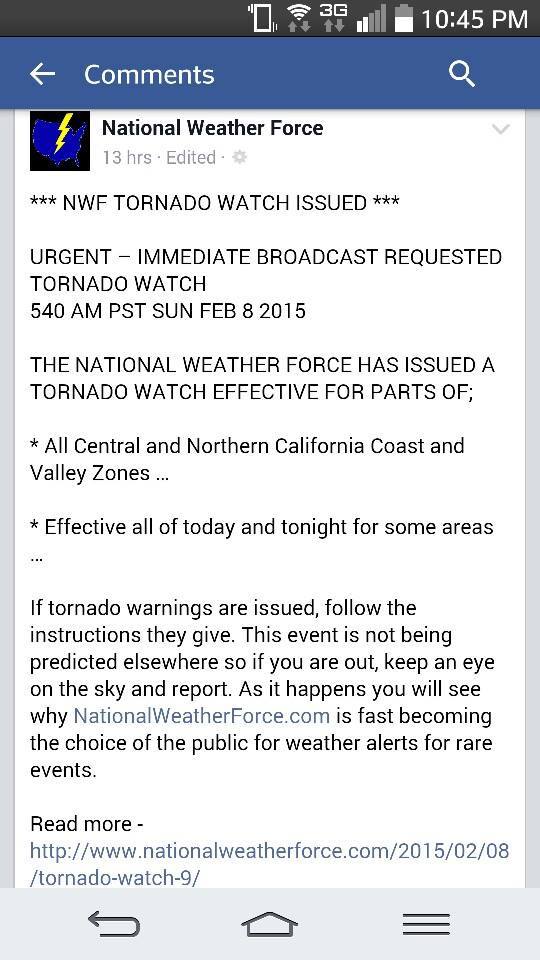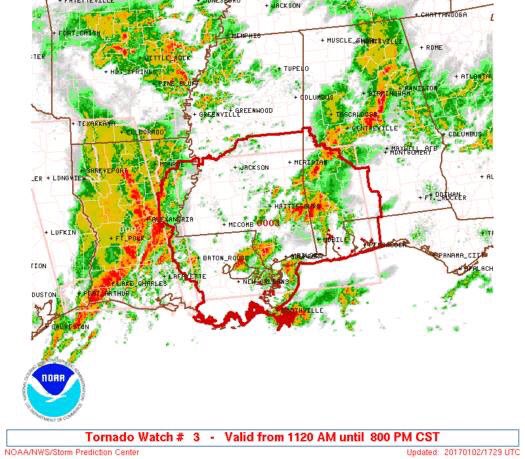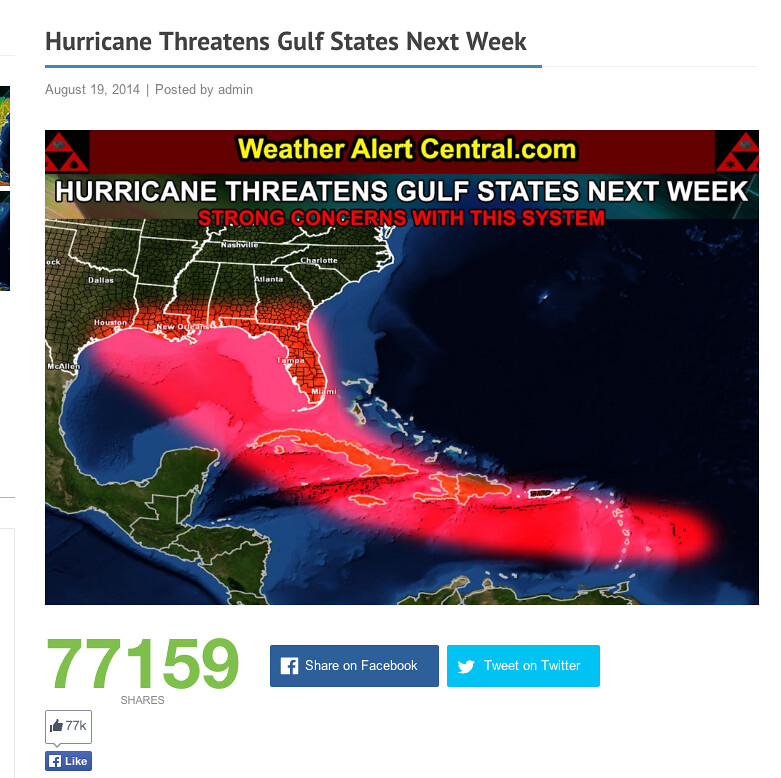(UPDATED: 9/5/21 @ 1:40PM)
Since severe weather can strike at nearly any time of the year, it is important to recognize the signs of a bogus forecast. Knowing the difference between someone offering an actual look at a potential outcome versus someone just trying to poke at your amygdala can save you a lot of stress. Plus it can help you from passing that information along to others, saving those people stress, too.
You may be thinking, “How does someone even make a fake forecast?”
It isn’t always a “forecast” that people are producing. Sometimes people just post a screenshot of model data that shows anomalous outcomes that are ridiculously – and impossibly unlikely – severe
Pause for the Cause: Think before you share
A lot of us scroll through facebook and twitter during lunch breaks or before we go to bed. We look at pictures from family and friends, read headlines without clicking on links. I’m just as guilty as everyone else.
There are the lists from Buzzfeed that give us 15 reasons Newsradio was the best series of the 90s (that one is true). Business Insider offers short videos about how to nail a job interview. Local TV stations my be posting about a city council meeting.
And doomsday weather maps with headlines “Massive Blizzopocolypse threatens millions” pop up, too. Or headlines like: “Tornadic Storms Aim California.”
Quite the grammatical curiosity, right?
Some folks may remember this one from 2014. Created quite the hub-bub.
The goal of fake forecasts? Trying to make money from your fear.
The worst part is that the site issues fake watches and warnings, too.

Looks pretty convincing. And official. I get it. I’d be worried, too, if I weren’t a meteorologist.
Facebook pages called “Weather Alert Central” or “National Weather Force” have historically been the peddlers of these bogus forecasts. But lately “First Alert (fill in the blank)” pages have popped up along with “Extreme (fill in the blank) Chaser” pages.
A special thanks to the National Weather Service in New Orleans for the picture as the person who issued it, deleted it. As he did with the above picture about tornadoes in California.
That is what he does. That is how he fools so many.
And others have come behind him. Doing the same thing. All in the name of stirring up emotions, causing fear, and – in the end – making money.
And one of the most frightening parts is that some of the people who run these pages threaten violence against those who question these forecasts. I’ve been threatened. Someone who runs one of these fake facebook pages said they would kill me.
One of the guys who runs some these fake weather pages has made threats against the National Weather Service, television meteorologists and meteorological website authors. Pretty crazy stuff.
This is why it is important to recognize some of the tell-tale signs of fakeness.
How to spot a fake forecast
Some of you seasoned weather watchers may be thinking, “Those are easy to tell they are fake! Give us a challenge, Nick!”
Perhaps you’re right. But bogus forecasts come in all different shapes and sizes. The good news is there seems to be a theme.
The biggest red flag should be the curious grammar. And not typos, because typos happen. I know that all to well! But bad grimmer in the sense that words are all stacked up and it seems like it was a train wreck of adjectives.
Most of the fake forecasts use strong language that doesn’t make much sense. “strong concerns” or “major extreme” are two examples I can think of that are used frequently. In the image I posted earlier, “storms aim California” isn’t proper English. Nor is it a proper headline. It looks more like a jumble of SEO (search engine optimization) words to get it ranked higher in internet searches.
The second biggest red flag should be people who post a forecast that included a lot of precision for a forecast that is more than 72 hours out. For example, some apocalyptic screen grab showing a massive tornado outbreak or Category 5 Hurricane showing up in, like, 12 days. It is often followed by, “this is only one model but I wanted to warn everyone”
No, they didn’t. They wanted to scare everyone into likes, shares, and clicks.
In fact, it was a post like that, sent to me by Shannon Crosby (thanks for the heads up!) that prompted this entire post.
This is what the post looked like.

And I get it, the wording in that post doesn’t sound ominous or fear-mongering. But, given human brain chemistry, it is (I’ll save that whole brain chemistry discussion for another post). Plus they are posting about something with a lot of precision on an event that is more than 10 days away.
Compare those the graphics I posted up higher and the graphics below issued by the Storm Prediction Center:


No flashy banners, no flashy text, no hot-pink colors. A straight-forward indication that the weather could get severe.
A Severe Thunderstorm or Tornado Watch looks like this:

And while local television watches and warnings may look different, most have identical colors for different kinds of watches or warnings. For example, a severe thunderstorm watch or warning will almost always be in yellow and a tornado watch and warning will almost always be highlighted in red.
Be Alert: People are out to scare you
That is really all this amounts to. People that run phony forecasting websites just want to trick/scare you into clicking their posts and sharing the posts with friends. It is one of the definitions of clickbait. It is the same reason awhile ago all of those “Top 10 reasons I hate lettuce, and No. 4 will make you squirm” were so popular. You couldn’t not click it!
And then when you visit the site, ads pop up all over the place. Or the page gets shares and likes and it fills the proprietor of the page up with dopamine and serotonin (back to brain chemistry).
And when someone puts up a map and it says “Tornadic” or “Category 5” and there is a bulls-eye on your house, you’re going to be concerned. I totally get that. But please remember who to trust when you see that. Check with the National Weather Service, your local media outlets, or even here!
Trust scientists that are transparent about their forecasting tools, approaches and skills. That is how you’ll know you are getting the best forecast.
The Truth: Forecasting has limits
Excuse me whilst I jump on top of a Soap Box.
Meteorologists can only know so much. Precision like, “what time with a tornado be at my house tomorrow?” or “How strong with the hurricane be next week” are actually not knowable things. We have computers that can give an answer, but it isn’t the correct answer.
And that is a very important thing to remember. Sadly, the line between an answer – any answer – and a correct answer isn’t always clearly spelled out by most meteorologists. Particularly the ones on TV.
Perhaps that isn’t fair to blame TV meteorologists, but the “Pinpoint Precision Weather Team” can’t exactly get on TV and say, “Rain will start between 3p and 7p tonight”
They are the “Pinpoint Precision” people, after all. They have to be precise. So, they have to give a precise answer. “Rain begins at 6:07pm for people in Bumblscram, Tennetucky!”
Even though it isn’t actually correct.
That level of false precision starts to leak into other areas of weather forecasting. And gives people false hope about what is actually knowable.
And that is one reason why people always say “meteorologists are always wrong!” Because, well, some are. Not because the forecast wasn’t well put together, it was just communicated with too much precision. False precision. Leading to a bad forecast for the end consumer of the forecast: You.
I had the opportunity to go to the National Weather Association conference in Tulsa last month. And there was a presentation by Kenzie Krocak discussing the perceptions that most people have about the accuracy of forecasting. And it was astonishing to me. Here is a tweet from her.
Here is the presentation, if you want to watch it, it was about 15 minutes long.
Her data suggest that most folks think that meteorologists are much better at forecasting specific stuff than we actually are.
And, honestly, I have to blame a lot of TV meteorologists for planting that seed. And social media has allowed that seed to grow.
Because now anyone can post a computer model output image showing a Category 5 Hurricane somewhere next week – and people think it is possible. Or even likely. Or even a promise. Because they’ve watched TV meteorologists use computer models to show storms arriving the next day at a certain time, or even a cold front showing up on a certain day.
When in reality, int he case of the Category 5 Hurricane, it is just one computer model, suggesting one thing, that is not accurate. But given the backdrop of false precision being peddled by television meteorologists for years, it has given people the illusion that it can be believed.
Let’s bring it full circle
I really just want everyone to have all the tools in their tool belt at all times. The more you know, the more you can defend yourself against the charlatans out there.
And my soap box rant about false precision sadly matters versus social media because these fake forecasts often prey on the intersection of the two.
That is the reason I made this (long, sorry) post. There are people out there who will manipulate you, based on human brain chemistry, to clicking, sharing or liking something. And they can do that because most of us have been influenced by false precision in meteorology for years on TV.
But there is only so much meteorologists can know about a forecast so far into the future. And often times if people are making claims that sound grandiose about something that is more than three to five days out… its unlikely to be completely true.



